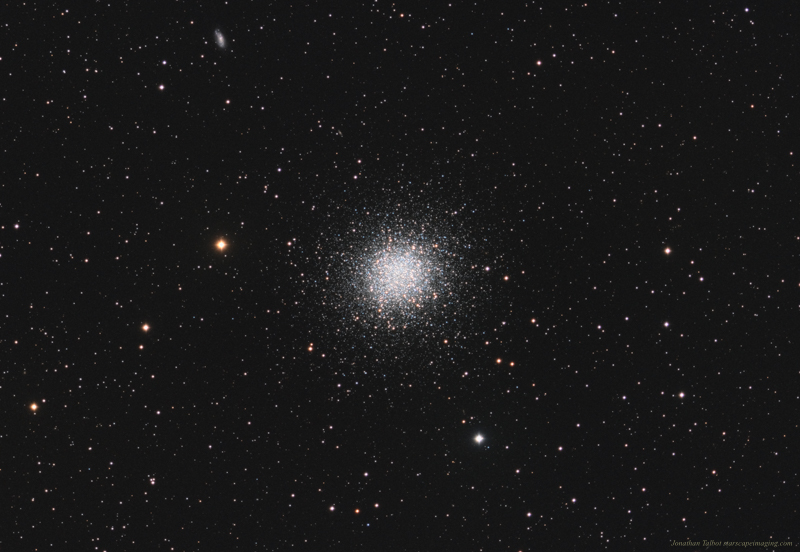Larger size jpg images available here: 1920 pixels wide Full size: Full resolution
Globular Cluster M13
About this object
M13, the great globular cluster in Hercules shines at magnitude 5.8 or just at the edge of visibility from a dark sky. Its made up of several hundred thousand stars and lies 22,200 light years distant. M13 is around 145 light years in diameter and was discovered by Edmund Halley in 1714. Off to the upper left you can also see the galaxy NGC 6207 and if you look close at the full resolution shot (link above) you can also see the small edge on galaxy IC 4617. This image was taken with a Stellarvue Telescopes, SVS 130 with a QSI 683 ccd camera. It combines 4hrs of exposure time through Red, Green and Blue filters.
M13, the great globular cluster in Hercules shines at magnitude 5.8 or just at the edge of visibility from a dark sky. Its made up of several hundred thousand stars and lies 22,200 light years distant. M13 is around 145 light years in diameter and was discovered by Edmund Halley in 1714. Off to the upper left you can also see the galaxy NGC 6207 and if you look close at the full resolution shot (link above) you can also see the small edge on galaxy IC 4617. This image was taken with a Stellarvue Telescopes, SVS 130 with a QSI 683 ccd camera. It combines 4hrs of exposure time through Red, Green and Blue filters.
Image Details
- Optics : Stellarvue SVS130 f5 655mm FL
- Mount: Paramount MYT
- Camera: QSI 683
- Filters: Astrodon
- Exposure (min): RGB 105:80:65 4.16hrs total
- Camera/Mount Control: The Sky X, CCD Auto Pilot 5
- Guiding: SX Lodestar
- Processing: PixInsight 1.8
- Location: Stark Bayou Observatory, Ocean Springs, MS
- Sky: Typical SQM 19.6-20.0, Bortle 5, Suburban
- Date: April 2-3 2019





